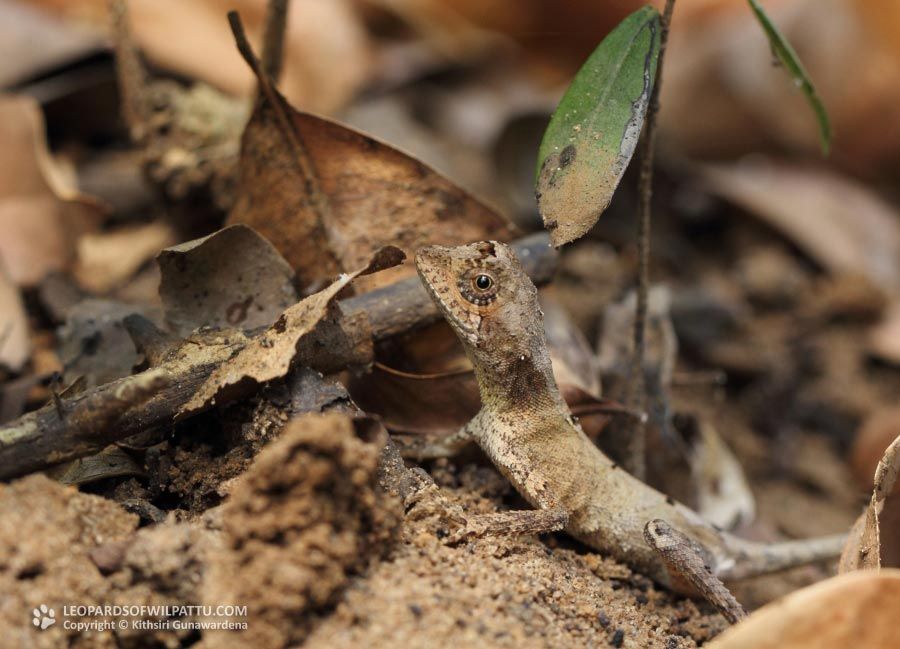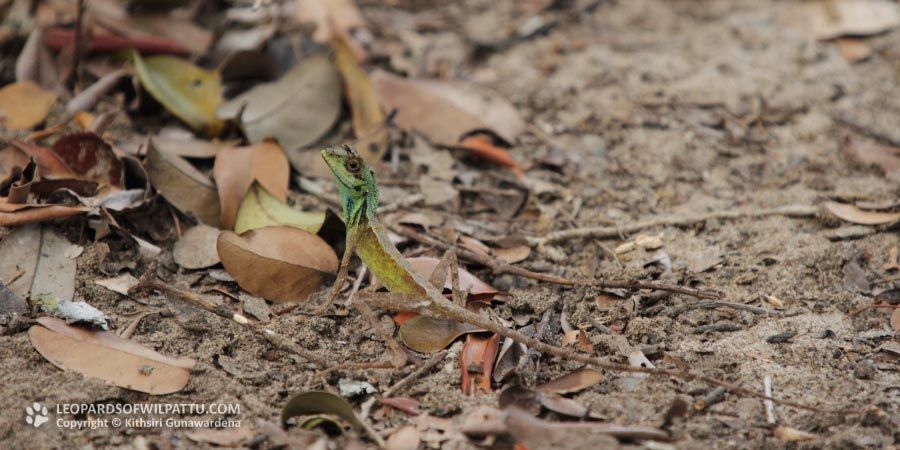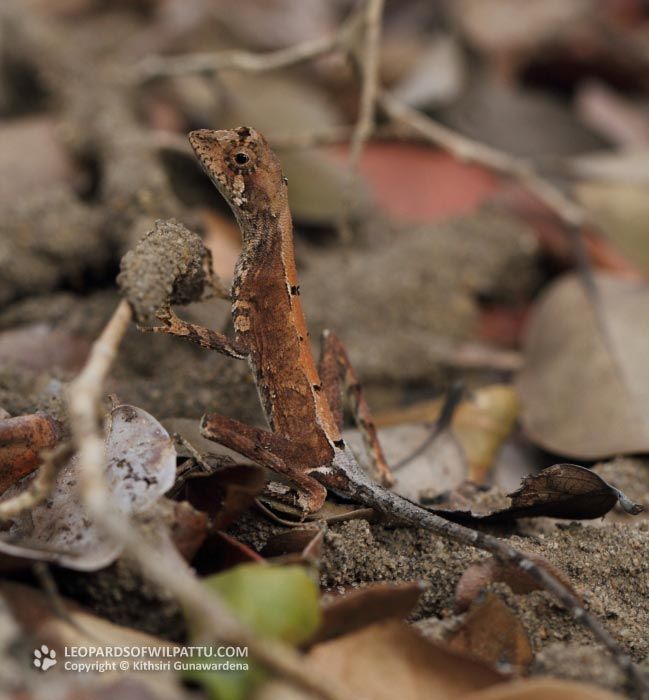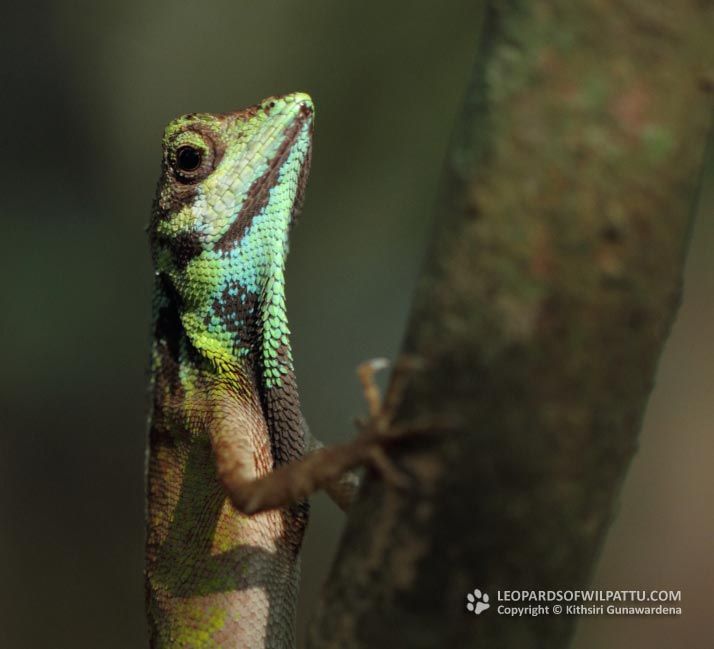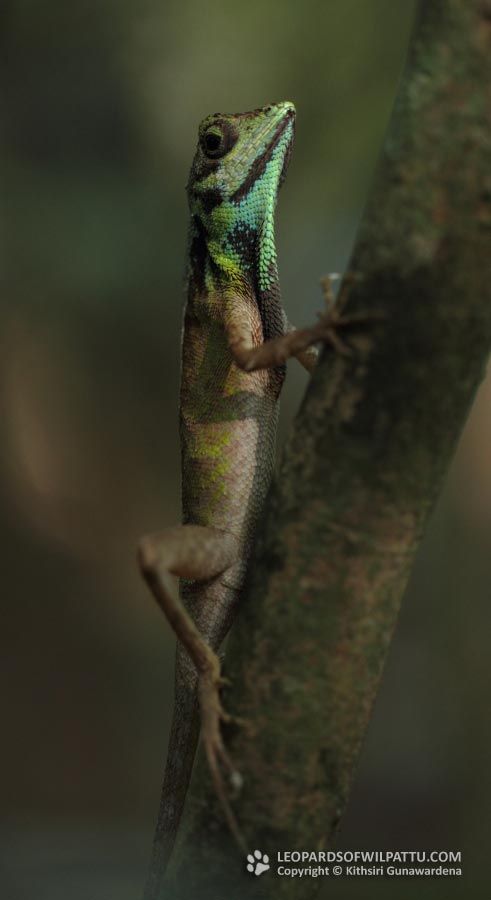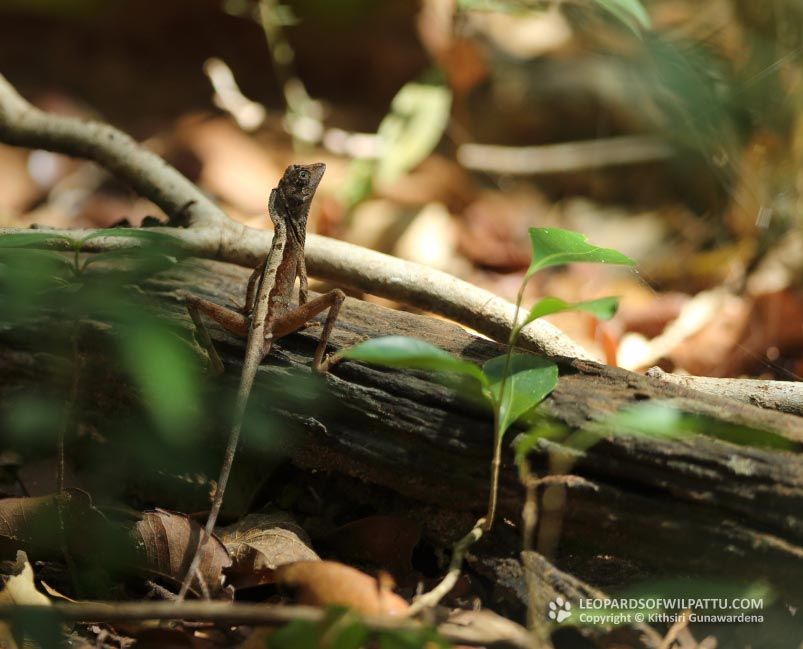
Reptiles ‹‹ Go Back
This lizard is endemic to Sri Lanka. This species can be identified in the filed from the species of the same genus that occurs in the wet zone forests of the country, Otocryptis weigmanni, by the black patch that is found on the dewlap of the male as well as the colour patterns of the displaying males. The conservation status of this species is regarded as “Least Concerned” (National Red List 2012) and it is protected under the Fauna and Flora Protection Ordinance as amended by Act No. 22 of 2009.
This species is widely distributed in the dry zone of the country where there are tall trees that offer shade and the ground is covered with leaf litter. I have observed this species at Dambulla, Kokagala in Padiyathalawa, Sigiriya, Pidurangala and at Yala and Kumana National Parks. The highest elevation at which I have observed this species is on the Monaragala Mountain at an altitude of 540meters.
When alarmed these lizards will hold their bodies up right and run across open areas with only using their hind feet which gives them their name “Kangaroo Lizard”.
In Wilpattu these lizards are quite common in areas where there are tall forests. They are usually found among the leaf litter perched on dried logs/branches on the forest floor or on the trunks of small trees few feet from the ground. When the male is displaying to lure the favours of a female or to defend its territory its head and body become extremely colorful as depicted in some of the photos. Some times while driving on roads such as Kumbuk Wila Upper Road and between Nelum Wila and Panikkar Villu junction these lizards can be observed darting across the road and settling down a few feet inside the forest. Once they settle on the ground they would generally stay stationery for some time offering an opportunity to photograph them from your vehicle. However one needs to observe the forest floor carefully as both males and females of this species are quite hard to detect among the leaf litter as the formation of their body structures and the brownish colour of their skins offer them excellent camouflage among the dried leaf litter.

